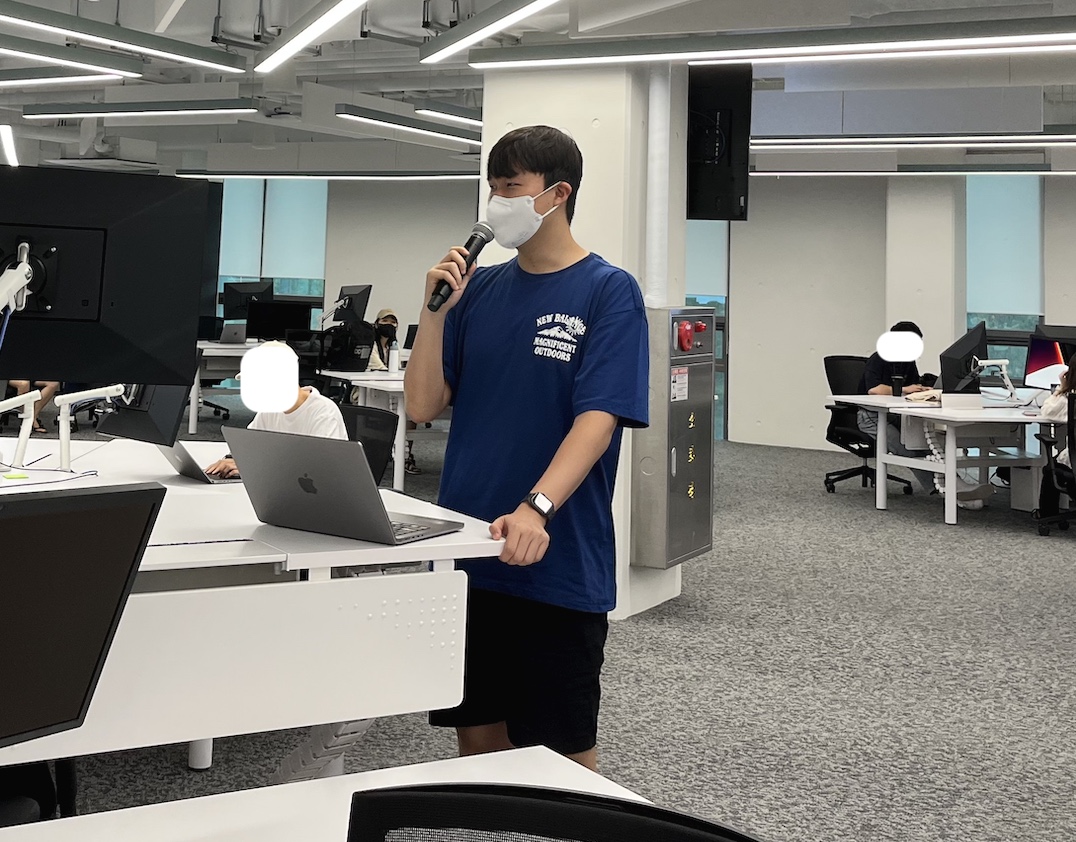1. Notification Center
2. 옵저버 등록하기
2.1. name
2.2. object
2.3. queue
2.4. block
2.5. Return Value
3. 옵저버 등록 예시
4. 옵저버 제거하기
4.1. observer
4.2. aName
4.3. anObject
5. 옵저버 제거 예시
var observer: NSObjectProtocol?
observer = NotificationCenter.default.addObserver(forName: UIApplication.userDidTakeScreenshotNotification, object: nil, queue: nil) { notification in
print("user take screenshot!")
NotificationCenter.default.removeObserver(observer!)
}swift1. Notification Center

등록된 옵저버들에게 노티피케이션을 보낼 수 있는 클래스이다.
- 모든 애플리케이션은 default Notification Center 를 가지고 있다.
- 노티피케이션을 그룹화하기 위해 새로운 Notification Center 를 만들 수 있다.
- 싱글 프로세스에만 노티피케이션을 보낼 수 있기 때문에, 만약 다른 프로세스에 노티피케이션을 보내고 싶다면 Distributed NotifiactionCenter 를 사용해야 한다.
2. 옵저버 등록하기
func addObserver(forName name: NSNotification.Name?,
object obj: Any?,
queue: OperationQueue?,
using block: @escaping (Notification) -> Void) -> NSObjectProtocolswiftNotifiaction 을 받아서 특정 블록을 실행하는 observer 를 등록하는 함수로, 각 매개변수에 대해서 알아보자
2.1. name
어떤 이름을 가진 Notification 을 받을지를 결정하는 매개변수. 만약 nil 로 준다면, 해당 이름을 기준으로 Notification 을 필터링하지 않는다.
2.2. object
옵저버에게 Notification 을 보내는 object, 즉 sender 를 의미한다. 만약 특정 sender 가 보내는 노티만 받고 싶다면, sender 를 등록하자. 만약 nil 으로 등록하면 노티피케이션 수신 기준으로 sender 를 사용하지 않는다.
2.3. queue
block 이 실행될 operation queue 를 의미한다. 만약 nil 이면, Notification 이 발행된 쓰레드에서 동기적으로 블록이 실행된다.
2.4. block
Notification을 수신할 때 실행될 블록, Notification Center 가 block 을 강하게 참조하고 있으므로, 꼭 removeObserver 로 옵저버를 제거하도록하자!
2.5. Return Value
Observer 처럼 행동하는 불명확 타입을 반환한다. Notification Center 가 해당 value 를 강하게 참조하고 있으므로, 꼭 removeObserver 로 옵저버를 지워주도록 하자.
3. 옵저버 등록 예시
UIApplication 에 이미 기정의된, 유저가 스크린샷을 찍을 때 발생하는 Notification 이 있다. 해당 Notification 에 addObserver 를 통해 옵저버를 추가하고, 스크린샷을 찍을 때 print 하는 코드를 작성해보자.
NotificationCenter.default.addObserver(forName: UIApplication.userDidTakeScreenshotNotification, object: nil, queue: nil, using: { notification in
print("user take screenshot!")
})swiftuserDidTakeScreenshotNotification 이름을 가지는 Notification 이 발생될 때마다, 우리가 넘겨준 print("user take screenshot") 클로저가 실행된다. 직접 확인해보자. 직접 아이폰을 연결해서 스크린샷을 찍으면, 실제로 잘 출력되는 것을 볼 수 있다.

4. 옵저버 제거하기
옵저버를 등록했으면, 위에서 기술한 것과 같이 더 이상 옵저버가 필요없어졌을 때 옵저버를 삭제하는 작업이 필요하다.
func removeObserver(_ observer: Any,
name aName: NSNotification.Name?,
object anObject: Any?)swift4.1. observer
Notification Center 의 dispatch table 에서 삭제할 옵저버를 넘겨준다.
4.2. aName
dispatch table 에서 삭제할 노티피케이션의 이름. 만약 nil 로 준다면 해당 이름을 기준 삼아 옵저버를 제거하지 않는다.
4.3. anObject
dispatch table 에서 삭제할 sender 오브젝트. 만약 어떤 object가 보내는 Notification 을 받는 옵저버들을 제거하고 싶을 때 넘겨주자.
5. 옵저버 제거 예시
var observer: NSObjectProtocol?
observer = NotificationCenter.default.addObserver(forName: UIApplication.userDidTakeScreenshotNotification, object: nil, queue: nil) { notification in
print("user take screenshot!")
NotificationCenter.default.removeObserver(observer!)
}swiftaddObserver 로 옵저버를 추가하면, 해당 옵저버가 반환값으로 넘어온다고 했다. 따라서 스크린샷 감지 옵저버를 등록하고, 클로저에서 해당 observer 를 Notification Center 에서 삭제하는 것으로 한 번만 스크린샷 찍는 것을 감지하는 코드를 작성했다.
실제로 앱을 실행해서 여러 번 스크린샷을 찍어도, user take screenshot 은 한 번만 출력되는 것을 확인할 수 있다.
'IOS 개발일지' 카테고리의 다른 글
| Tuist로 Xcode 프로젝트 설정하기 (0) | 2022.11.04 |
|---|---|
| Tuist 도입 전 Target, project, workspace 에 대한 공부! (0) | 2022.11.04 |
| Notification Center - Publisher (0) | 2022.05.24 |
| 백준 티어 배지를 직접 구현해보기 (0) | 2022.02.17 |

Comment